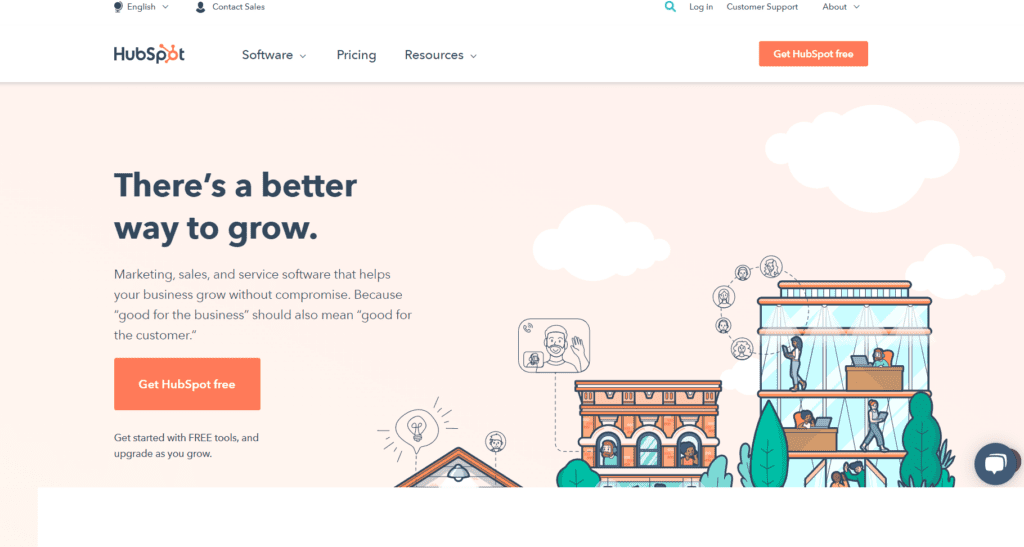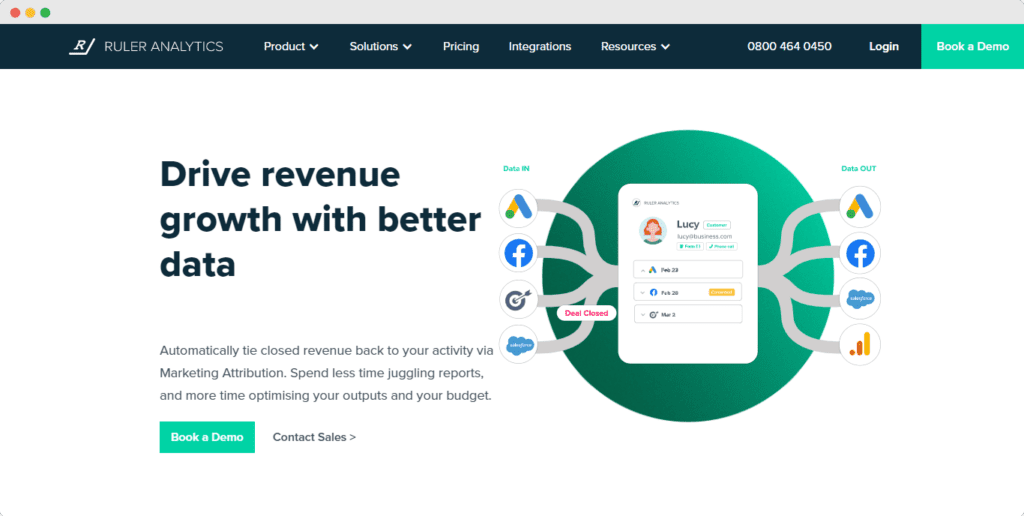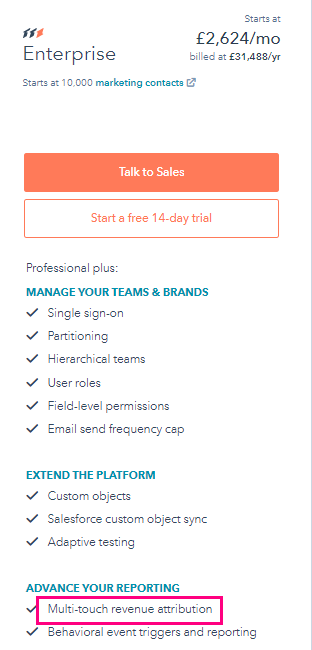Compare HubSpot and Ruler Analytics to discover what each tool has to offer and how they stack up against each other for marketing attribution.
Ruler Analytics and HubSpot are two tools used by marketers to optimise their marketing. But how do they compare when it comes to marketing attribution?
If you’re looking for details on which tool will best support you to track your leads and evidence your impact, then keep reading.
This blog will go through:
So, let’s get started.
HubSpot is an inbound marketing and sales tool that supports businesses to attract, nurture and convert leads into deals.

If you work in marketing or sales, then you’ve most likely heard of HubSpot already. They’re a giant in the marketing space, offering guides and courses on all facets of marketing. Their product started as a CRM tool but has since expanded to cover all kinds of resources from lead tracking to marketing automation.
For this blog, we’re going to be discussing HubSpot’s attribution feature in particular.
Ruler Analytics is a marketing attribution software that helps marketers make sense of their data by collating it and sending the data you need where you need it most.
💡 Pro Tip
Not sure what attribution is or how it could help you achieve your business goals?
Read the full guide to marketing attribution.

By tracking each and every lead, plus every touchpoint they have with your business, you can definitively prove your impact and return on investment. Ruler Analytics effortlessly aligns anonymous website visitor data with lead and revenue data in your CRM and your analytics tools.
💡 Pro Tip
Are you looking to learn how to track every touchpoint? Read our blog on how you can track full customer journeys directly in Ruler Analytics.
When considering a marketing attribution tool, it’s important to know exactly what you want from your chosen solution. We go through the main differences between Ruler Analytics and HubSpot so you can make an informed decision on which suits you better.
Ruler Analytics is a dedicated attribution platform. It’s what we specialise in and we work hard to make sure the tools and features we offer support marketers to make better data-driven decisions thanks to smart attribution data.
HubSpot meanwhile is first, a CRM. It can help you track, manage and contact your leads and is the perfect tool when it comes to aligning your sales and marketing teams.
Its attribution tool comes as part of their Enterprise plan meaning it’s unreachable for small to mid-sized businesses.
Related: HubSpot’s attribution features: a complete guide
HubSpot comes with a free account. But this is incredibly basic and does not include attribution. In fact, to unlock attribution you have to be forking out over £2,000 per month as part of their Enterprise plan.

While this cost isn’t for attribution alone, it’s a lot to pay when you’re just looking for an attribution and lead tracking solution.
Ruler Analytics meanwhile starts at £199 per month for marketing attribution and call tracking. For this cost, you can link all of your data and start crediting revenue back to your marketing channels, campaigns and content.
HubSpot offers ‘original source’ as a field in your CRM for leads. But you can’t have custom sources. In fact, HubSpot only offers high-level channels.
Related: Tracking marketing leads in HubSpot
For example, instead of breaking channels down to ‘Google Paid’ and ‘Bing Paid’, they segment both as ‘Paid Search’. This lack of visibility means you can’t easily distinguish performance between paid channels.
Ruler Analytics meanwhile offers source reports, where you can see the individual contribution each channel has on your lead and revenue generation.
HubSpot does a fantastic job of collating and presenting data in its own dashboard. What you’ll struggle with is getting the revenue data out of your CRM and to your favourite applications.
Sending data from HubSpot to Google Analytics for example is complicated. Whereas Ruler Analytics, once integrated, will automatically fire and attribute revenue to the correct channels, campaigns, ads and even keywords.
Related: Connecting HubSpot and Google Analytics
Honestly, it depends on what you’re looking for.
If you’re already using HubSpot then you have a few options. You could upgrade your plan to include attribution. With this, you’ll get access to attribution plus plenty of other features.
Or, you could stay on your free or lower-tier plan and integrate Ruler Analytics if all you’re looking for is marketing attribution. It’s a better cost and is a dedicated platform so provides wider and more detailed analysis and data.
If you’re not already using HubSpot as your CRM, then swapping over just to get attribution is a lot of work. You’ll have to move over all of your contacts plus your automation and other processes. While HubSpot is probably up there as one of the best tools for improving your inbound marketing and lead nurturing, it requires a lot of time and effort to get it right.
If you’re happy with your current CRM, then consider instead integrating Ruler Analytics. Ruler can integrate with thousands of apps meaning you can collect and send data to and from whatever marketing stack you’re currently using.
Read our complete guide to HubSpot attribution here. Or, see the data in action and how Ruler can help you track, evidence and optimise your marketing campaigns.
